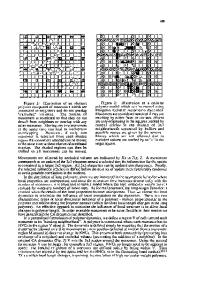Cellular Automaton Study of Hydrogen Porosity Evolution Coupled with Dendrite Growth During Solidification in the Molten
- PDF / 6,462,228 Bytes
- 10 Pages / 593.972 x 792 pts Page_size
- 40 Downloads / 328 Views
N
ALUMINUM alloy is widely used in the aerospace and automobile industries due to its high strength-toweight ratio, excellent corrosion resistance, and relatively low raw material cost. As the most commonly used method of connection, welding is used for aluminum alloy plate connection. However, porosity defects always appear after welding, which can significantly reduce the mechanical properties of welded joints of Al alloy, including ultimate strength, yield strength, ductility, and fatigue resistance. To reduce the negative effects of the defects, researchers have designed many experimental test methods and theoretical study methods to test the performance of weld beads and optimize the parameters based on the results.[1–8] However, it is difficult to measure dynamic evolution of porosities and microstructures at high temperatures using experimental and theoretical methods. The use of computational material science has enhanced the understanding of weld solidification
CHENG GU, YANHONG WEI, FENGYI YU, XIANGBO LIU, and LVBO SHE are with the College of Material Science and Technology, Nanjing University of Aeronautics and Astronautics, Nanjing 211106, China. Contact e-mail: [email protected] Manuscript submitted December 13, 2016.
METALLURGICAL AND MATERIALS TRANSACTIONS A
behavior in recent years.[9–13] Rappaz and Gandin[14] first put forward a cellular automaton (CA) model to simulate heterogeneous nucleation and grain growth by assuming a uniform temperature field. Spittle and Brown[15] developed a two-dimensional CA model to simulate steady-state columnar dendrite growth in binary alloys. However, their models are based on the assumptions that the shape of the dendrite tip is an ideal parabolic and that the dendrite grows at a steady rate. These assumptions are only applicable to an approximate analysis of the dendrite tip and are not accurate for simulating the whole single dendrite growth or even the growth of multiple dendrites in the mesoscopic scale. Nastac[16] applied a continuous variable front tracking model to explicitly track the sharp solid/liquid (S/L) interface on a fixed Cartesian grid. Zhan et al.[17] proposed the diagonal modeling method to simulate dendrite growth at a certain angle. Zhang and Xu[18] proposed a three-dimensional (3D) model and a modified shaped function model to simulate dendrite growth during a real high rapid solidification process on a macro scale. Their model used the condition of interfacial solute conservation to determine the dynamic behavior of dendrite growth, and this method is more precise in mesoscale simulations. Pan and Zhu[19] developed a 3D sharp interface model to simulate dendrite growth in the low Pe´clet number regime, and they also proposed a solution of the local S/L interface curvature to describe specific crystallographic
Fig. 1—Illustration of the physical system for dendrite growth and porosity evolution during solidification in the molten pool.
orientations of dendritic growth in three dimensions. In a word, these models are very important and useful for under
Data Loading...











